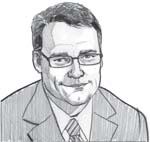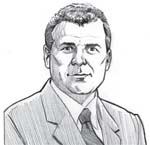Brian Stacy
How does sustainability factor into the LED discussion? This new source creates a whole new set of issues. Fisher: I think almost every conversation we’ve had on a project, sustainability has come up. When we start to talk about sustainability and the client starts to mention a source, we try to steer away from a specific product to understand what the real goal of sustainability is for them and what they’re trying to do.
Lind: It’s an issue of whether or not the product has a method to be replaced. It’s very hard, to simply test gear out and make some assertions as to how it will perform based on its rated life—and when you’ve got a length of time such as 50,000 hours, you have products being launched where you’ve got no experience probably beyond maybe 12 to 18 months when they get launched.
Myer: But I like the fact that as an industry, we are talking about it, we’re not pretending it doesn’t exist, or saying we’ll deal with it later.
Can SSL withstand the current pressures in the economy? Steen: Look at the Philips, the Osrams, the GEs—they are still spending lots of R&D dollars. You’re going to see a lot of product continuing to come out. In general, I think that LED is actually helping the lighting industry … people can start saving money with two- and three-year paybacks by going to LEDs.
Lind: In some cases, there is still the … economic factor that doesn’t affect me on the controls side as much as [it] affects, I think, people on the lamp and fixture side.
| “LEDs are coming on the heels of the CFL being ‘the solution for the world.’ I don’t think everybody’s expectations of that lamp were ever satisfied.” — Eric Lind |
Steen: LEDs are riding a big momentum right now, where everybody has got to have them. I don’t think we’ve experienced the hangover yet; I think we are still in the binge. So how is the hangover actually going to turn out?
Fisher: We’re all in a position to help drive this boat if we can get in front of it and help decide what we want to do—and maybe reduce the hangover.





